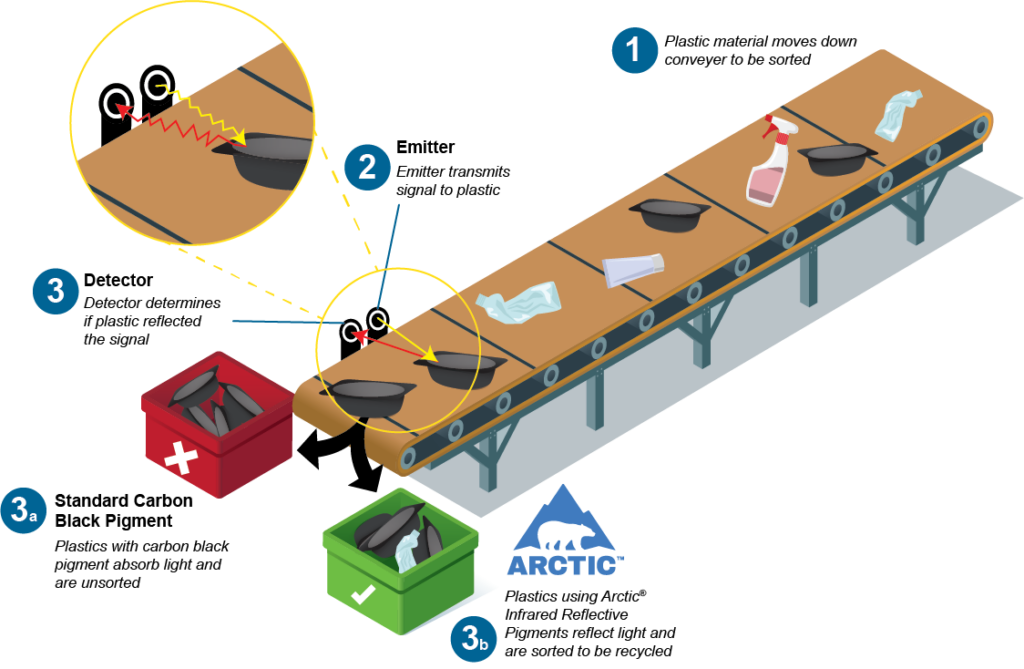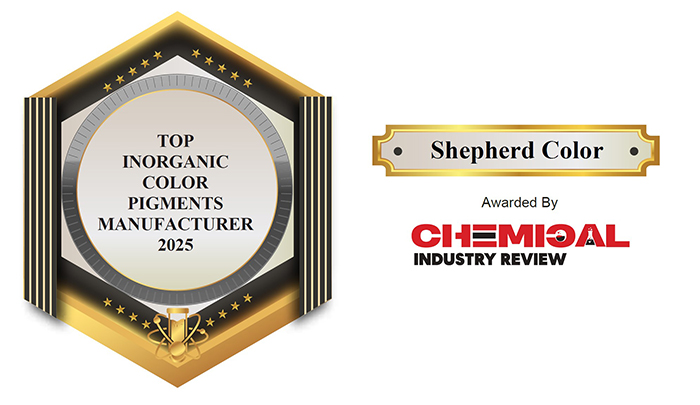NEWS
Black Pigments FDA Approved for Food Contact and Optimized for Recyclability

Shepherd Color’s solutions for improving the recyclability and sustainability of plastics are:
- Usable in all polymers that are recycled
- High-heat stable for multiple lifetimes
- Non-migratory
- The only FDA approval for two different variants for optimized properties for your application
- Non-magnetic so no issues with metal separation and detection
- World-wide registrations and availability
Sustainability has many facets, and one of the most challenging is recyclability. A key recyclability technical issue is the inability for automatic sorting equipment to identify different plastics when they are black in color. The Shepherd Color Company has addressed this issue with IR optimized products that allow dark colored plastics to be automatically sorted.
Shepherd Color obtained FDA Food Contact Approval (FCN2206) for not one, but two IR optimized black pigments to address different plastics uses. Both products are part of our Arctic® line of IR reflective pigments.
Arctic Black 10F925 is a masstone optimized product for coloring OEM black food packaging materials. With a deep, cool-shade color it provides the best replacement for this application.
Arctic Black 10F951 is a higher tint-strength pigment when Post Consume Recycled (PCR) material must be colored. The high tint strength controls the variable color of PCR material for more consistent and usable recycled material.
How are Arctic Infrared Reflective Pigments Different?
These new products are part of the Shepherd Color Arctic line of IR optimized pigments. While the visible part of the spectrum from 400-700nm is perceptible to the human eye as colors, past 700nm our eyes are not able to see these invisible infrared wavelengths. Standard black pigments absorb in the visible for a dark color and continue to absorb into the infrared. Shepherd Color’s Arctic pigments absorb in the visible for a dark, aesthetically pleasing color- but in the invisible infrared, they stop absorbing and reflect or scatter. Normally, this would cause something to look lighter or gray in color, but because these wavelengths are not perceived by our eyes, the material looks black in color. The sun’s energy is roughly split between the visible and infrared wavelengths, so Arctic pigments allow dark materials to stay cooler due to less energy being absorbed in the infrared.
For the recycling application, the lack of IR absorption of Arctic pigments allows the use of special equipment to identify the polymer by its unique IR properties.

Once identified, the plastic can be sorted and used to make higher quality and useful recycled feedstock.
Improved Sustainability
Shepherd Color Arctic black pigments are useful in three ways to improve sustainability. In building product materials, they are inherently durable for long lifecycles while their IR reflective properties keep roofs cooler for potential reduction in cooling energy use. Now, these IR properties increase the recyclability of black colored plastics.
Author: Mark Ryan, Marketing Manager with the Shepherd Color Company
Interested In Learning More?
If you are interested in Black 10F951 or Black 10F925, you may Request a Sample or Contact Us for additional information.


